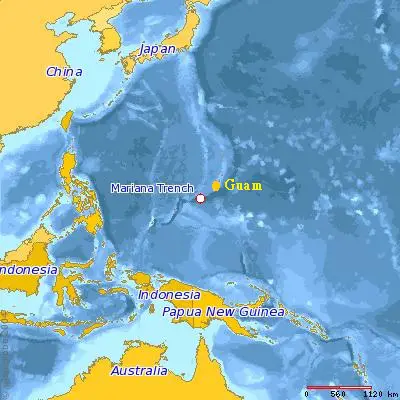The European Parliament and the Council of the European Union have reached a provisional political agreement on the ambitious new measures proposed by the Commission to tackle marine litter at its source, targeting the 10 plastic products most often found on our beaches as well as abandoned fishing gear.
Today’s agreement is based on the Single-use plastics proposal presented in May by the Commission as part of the world’s first comprehensive Plastics Strategy, adopted earlier this year, to protect citizens and the environment from plastic pollution whilst fostering growth and innovation. The new rules contribute to a broader effort of turning Europe into a more sustainable, circular economy, reflected in the Circular Economy Action Plan adopted in December 2015. They will place Europe’s businesses and consumers ahead as a world leader in producing and using sustainable alternatives that avoid marine litter and oceans pollution, tackling a problem with global implications.
First Vice-President Frans Timmermans, responsible for sustainable development said: “I warmly welcome today’s ambitious agreement reached on our Commission proposal to reduce single-use plastics. This agreement truly helps protect our people and our planet. Europeans are conscious that plastic waste is an enormous problem and the EU as a whole has shown true courage in addressing it, making us the global leader in tackling plastic marine litter. Equally important is, that with the solutions agreed upon today, we are also driving a new circular business model and showing the way forward to putting our economy on a more sustainable path.”
Vice-President Jyrki Katainen, responsible for jobs, growth, investment and competitiveness, added: “Tackling the plastics problem is a must. At the same time, it brings new opportunities for innovation, competitiveness and job creation. We will discuss those thoroughly with industry within the Circular Plastics Alliance. With the agreement reached today, we are showing that Europe is doing a smart economic and environmental choice and is advancing towards a new truly circular plastics economy.”
Commissioner for the environment, maritime affairs and fisheries, Karmenu Vella said: “When we have a situation where one year you can bring your fish home in a plastic bag, and the next year you are bringing that bag home in a fish, we have to work hard and work fast. So I am happy that with the agreement of today between Parliament and Council. We have taken a big stride towards reducing the amount of single-use plastic items in our economy, our ocean and ultimately our bodies.”
Different measures for different products
The new EU directive on Single-Use Plastics will be the most ambitious legal instrument at global level addressing marine litter. It envisages different measures to apply to different product categories. Where alternatives are easily available and affordable, single-use plastic products will be banned from the market, such as plastic cotton buds, cutlery, plates, straws, drink stirrers, sticks for balloons, products made of oxo-degradable plastic and food and beverage containers made of expanded polystyrene For other products, the focus is on limiting their use through a national reduction in consumption; on design and labelling requirements; and waste management/clean-up obligations for producers.
Next Steps
The provisional agreement reached today must now be formally approved by the European Parliament and the Council. Following its approval, the new Directive will be published in the EU’s Official Journal and the Member States will have to transpose it after two years.
Background
This initiative delivers on the commitment made in the European Plastics Strategy to tackle wasteful and damaging plastic litter through legislative action. The measures proposed will contribute to Europe’s transition towards a Circular Economy, and to reaching the United Nations Sustainable Development Goals and the EU’s climate commitments and industrial policy objectives.
In December 2015 the Juncker Commission adopted an ambitious new Circular Economy Package to help European businesses and consumers to make the transition to a stronger and more circular economy where resources are used in a more sustainable way. The Package has broken down silos in the Commission and contributes to broad political priorities by tackling climate change and the environment while boosting job creation, economic growth, investment and social fairness. It has been prepared by a core project team co-chaired by First Vice-President Frans Timmermans and Vice-President Jyrki Katainen with the close involvement of Commissioners Karmenu Vella and Elżbieta Bieńkowska. Many other Commissioners were also involved in its preparation and helped identify the most effective tools covering a wide range of policy areas.
The proposed Directive follows a similar approach to the successful 2015 Plastic Bags Directive, which brought about a rapid shift in consumer behaviour. The new measures will bring about both environmental and economic benefits, such as for example:
- avoid the emission of 3.4 million tonnes of CO2 equivalent;
- avoid environmental damages which would cost the equivalent of €22 billion by 2030;
- save consumers a projected €6.5 billion.
The Single-use plastics directive is complemented by other measures taken against marine pollution, such as the Directive on port reception facilities, on which the European Parliament and the Council just reached a provisional agreement last week. The Directive tackles waste from ships, with a focus on sea-based marine litter. It sets measures to ensure that waste generated on ships or collected at sea is always returned to land, recycled and processed in ports.
Earlier this month the European Commission launched also the “Circular Plastics Alliance” an alliance of key industry stakeholders covering the full plastics value chain as part of its persisting efforts to reduce plastics littering, increase the share of recycled plastics and stimulate market innovation. The Alliance aims to improve the economics and quality of plastics recycling in Europe, and will, in particular, strengthen the match between supply and demand for recycled plastics which is identified as the main obstacle to a well-functioning EU market of recycled plastics.
Press Releases: europa.eu
Photo Courtesy: unep.org
The post European Commission Welcomes Ambitious Agreement On New Rules To Reduce Marine Litter appeared first on Maritime Manual.
from WordPress http://bit.ly/2AfJJAa
